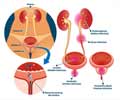A new study reveals that using alcohol impregnated disinfection cap instead of standard scrubbing protocol can cut down the number of central line-associated bloodstream infections by more than half.
A new study published in the American Journal of Infection Control reveals that using alcohol impregnated disinfection cap instead of standard scrubbing protocol can cut down the number of central line-associated bloodstream infections by more than half.
A team of researchers from NorthShore University HealthSystem conducted a study of adult patients in order to determine the efficacy of 70 percent alcohol-impregnated disinfection caps over the standard cleaning protocol, which involves scrubbing the catheter hub with an alcohol disinfectant wipe prior to accessing the lines. In a three-phased study, contamination rates among 799 patients sampled from three hospitals declined from a baseline of 12.7 percent using the standard cleaning protocol, to 5.5 percent when the disinfection cap was used, and increased back to 12 percent when the intervention was removed and standard protocol was reinstated. Infection rates at four hospitals declined from a baseline of 1.43 per 1,000 line days to 0.69 during the intervention, and returned to 1.31 per 1,000 line days when the intervention was suspended.
The researchers estimated that system-wide implementation of the disinfecting caps would prevent 21 CLABSIs and four deaths each year.
A central line-associated bloodstream infection is a serious infection that occurs when germs enter the bloodstream through a catheter (tube) that doctors often place in a large vein in the neck, chest, or groin to give medication or fluids or to collect blood for medical tests. Contaminated catheter hubs can be a cause of such infections.
"Catheter hub decontamination requires a thorough scrub, and compliance varies," state the authors. "The approach of using a continuously applied alcohol-impregnated sponge as a cap on the hub for a standard approach to catheter care may eliminate the problem of teaching healthcare providers one additional disinfection process they need to use as part of their busy patient care schedule."
Source-Eurekalert

 MEDINDIA
MEDINDIA




 Email
Email





